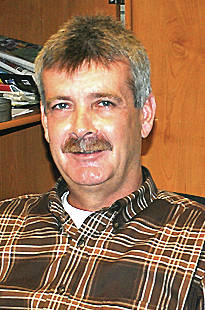
Driving in and around Highland County, have you ever wondered where some of the smaller settlements – like Boston or Samantha or Lynchburg – got their name or came to be? Well, thanks to my old buddy Galen Neal, those of you don’t already know some of those little tidbits are about to get a history lesson.
A couple weeks back, knowing we were preparing to celebrate The Times-Gazette’s 200th birthday this week, Galen brought a 54-page book titled “Highland County Plat Maps – Including Municipal Maps and Historical Notes,” in to share with our newsroom. It was published in 1976 during the Hillsboro bicentennial celebration by the Hillsboro Lions Club.
Besides maps of all parts of the county, it also contains interesting notes on the beginnings of most of the county’s settlements. So, according to the book, following are some of the stories:
Boston, platted in 1840, is believed to be named for Boston, Mass. For many years it was known as Dallas Post Office because Owensville, Ohio, had a post office named Boston.
Samantha, was platted in 1845. It was originally called Beeson’s Crossroads. The settlers were not satisfied with the name and decided to rename it in honor of the first girl to enter the crossroads store. A young girl by the name of Samantha rode into the settlement on horseback and went into the store, hence the name Samantha.
Allensburg was platted in 1839. It was named in honor of William Allen, a United States senator from Ohio from 1837 to 1849.
Belfast was platted in 1834. The second and last battle between Indians and settlers in Highland County took place about three-quarters of a mile northwest of Belfast near a large Indian mound above the forks of Brush Creek. A party of about 50 Kentucky border soldiers was homeward bound from near Lynchburg, where they had been sent to recover the bodies of settlers that had been killed there by the Indians. They were surprised near Belfast, where they had stopped for rest and breakfast, by a group of Indians. Although greatly outnumbered, they made a successful retreat and reached the Ohio River safely.
Buford was platted in 1834. When settlers arrived, they found a large Indian trail that had been blazed through the area and an unusually large quantity of tools, axes, charcoal and pottery of the Mound Builders was found throughout the township.
Danville was platted in 1835. About 1800, a group of Irishmen settled on the banks of a stream near what is now Danville. Their settlement was called Smokey Row from the name given it by Indians because of the smoke from the many sugar camps along the creek. In 1816, Danville was where the first bricks were burned in Highland County. The bricks were used to make chimneys.
East Monroe was platted in 1815 and is named in honor of President James Monroe. East Monroe Falls, south of the village, is known as the “Little Niagra Falls” of Highland County. The water falls 21 feet into a basin and flows south.
Duncan McArthur, while surveying in 1796 for a road west from Chillicothe, made camp near what is now the public square in Greenfield. He and his party found Indians nearby. In bartering with a squaw for some fresh meat, she invited the group to her nearby wigwam. In that area the group found ponies grazing in a natural green field. And so Greenfield was named.
Although located on seven hills, Hillsborough, founded in 1807, was named for Englishman Lord Hillsborough, who was the Lord’s Commissioner of Trade and Plantations.
Leesburg was settled in 1802 by a group led by Nathaniel Pope. In the buying and selling of the land many titles were challenged. Squire Johnson made a plat of the town in 1814. Situated on Lee’s Creek, he originally called it Leesbrugh, meaning Lee’s Town. Because of the title disputes, many who settled in the area established themselves in new additions adjoining the village. Others even went elsewhere to avoid the disputes. Therefore, Leesburg never attracted many settlers.
Lynchburg was platted in 1830 by Coleman Botts and Andrew Smith. One account has it named for the defeat suffered by settlers at the hands of native Indians in 1792. A second account reports many who settled there were from Lynchburg, Va. and that they named it after their former home. A large encampment of Shawnee Indians, under the leadership of Tecumseh, occupied the Lynchburg site until about 1806. In 1792, Highland County’s worst battle between Indians and settlers took place. Simon Kenton and a party of men on horseback were pursuing Indian marauders who had crossed the Ohio River into Kentucky, burned the cabins of settlers and escaped northward with stolen horses. When Kenton’s party reached what is now Lynchburg, they found they were greatly outnumbered by Indians and began to retreat. The Indians followed and attacked. Alexander McIntyre was killed in the battle. For many years the scared, notched trees, and remains of campfires and weapons remained as evidence of the battle.
To be continued…
Reach Jeff Gilliland at 937-402-2522 or [email protected].


